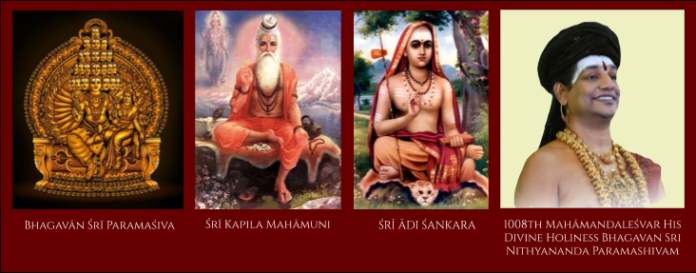The Mahanirvani Peeta has been the main Banyan Tree of Sanatana Hindu Dharma from time in memorial till today. Starting with Sadashiva and through Kapila, Krishna, Buddha, Shankara and others, the Peeta has produced some of the greatest stars of the world who not only produced a new sampradaya but also assimilated and re-organized all the divergent sampradayas of their times under one universal umbrella without diluting the richness and relevance of each of the branches.
The tree of Mahanirvani Peeta – the seat of the Naked Ascetics – has created innumerable number of Banyan trees throughout time – each of which have gone ahead and produced a vibrant tradition in their own right. In recent times the traditions of Ramakrishna Mission, the Self Realization Fellowship of Paramahamsa Yogananda, the sampradaya of Anandamayi Ma and so on were offshoots of the Mahanirvani Peeta.
But in spite of producing such a forest of traditions, the main tree continues to produce Mahahamdaleshwars who redefine Sanatana Hindu Dharma.
Sadashiva combined the various technologies for enlightenment into the Agamas – which are the complete works of Sadashiva. In his Vignyana Bhairava Tantra he lists 120 techniques for enlightenment – each of which can give rise to many religions. The Agamas along with the Vedas are considered as “Shruti” or revealed works – books that are not written, but heard and transcribed.
Subsequent to Sadashiva, Kapila performed the amazing work of finding a “common minimum base” among all the thousands of branches trees of Dharma at his time. His philosophy of Sankya is the distilled essence of Sanatana Hindu Dharma event till today.
Many thousands of years later- in historic times, Bhagawan Sri Krishna performed the same integration by categorizing and combining all the sampradayas into 18 broad categories of schools under the banner of Yoga and described how each of them contributes to the union of Jivatma with the Paramatma – the ultimate divine consciousness. His definition of Bhakti Yoga, Jnana Yoga, Karma Yoga and so on continues to provide the base framework for much of Hindu thought.
After Krishna, Shankara was the one to redefine Hinduism under the banner of Advaita. He was able to assimilate the universal infinite Brahman of the Vedas and the nihilist Sunyatva of the Buddha under the one philosophy of Advaita – non duality. Advaita has, since Shankara’s time formed the essence of every Hindu thought trend. Even the schools of Dwaita (or duality) define themselves in reference to Shankara’s Advaita and as modifications to his realization of the the ultimate oneness.
Paramahamsa Nithyananda is the latest in the line of incarnations who manifest on the planet whenever the load on the planet is unbearable because of confusion and chaos caused by inauthentic thought trends created over time by the dilution of teachings and misinterpretations of the Sastras. He has brought together the apparently disparate traditions of devotion, yoga, meditation, knowledge, karma yoga and so on into one integrated understanding of the science of completion and the four principles of integrity, authenticity, responsibility and enriching. This framework unifies not only all the spiritual traditions of the inner world but also the success of the outer world and removes the artificial barrier between the two worlds. By bringing scientific validation of all the ancient technologies and the mystical powers of consciousness, Swamiji is bringing back spiritual legitimacy to Sanatana Hindu Dharma in the world that is dominated by atheistic thought trends and materialistic nihilism.














